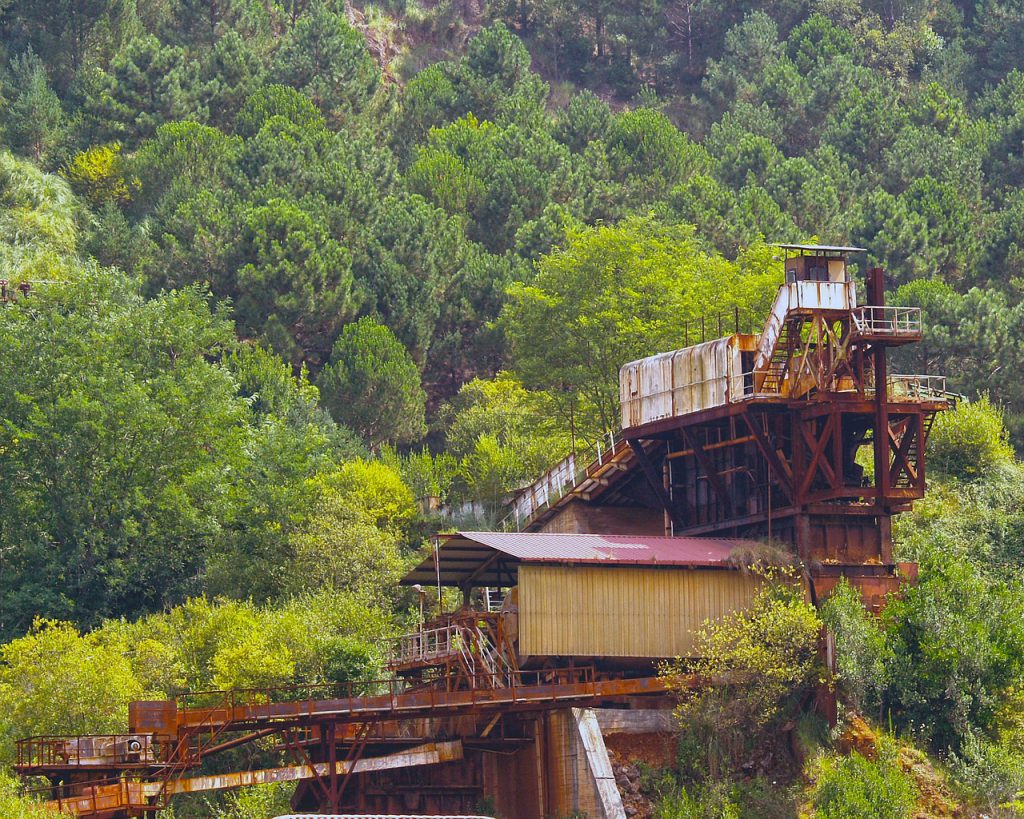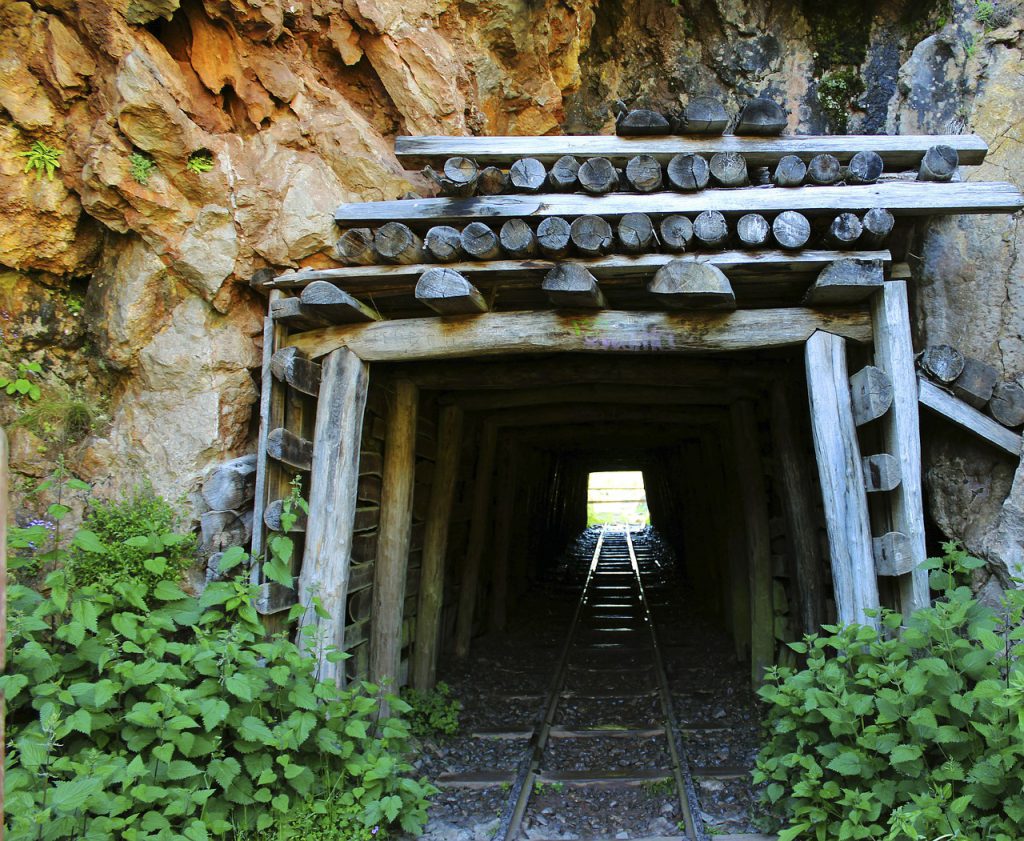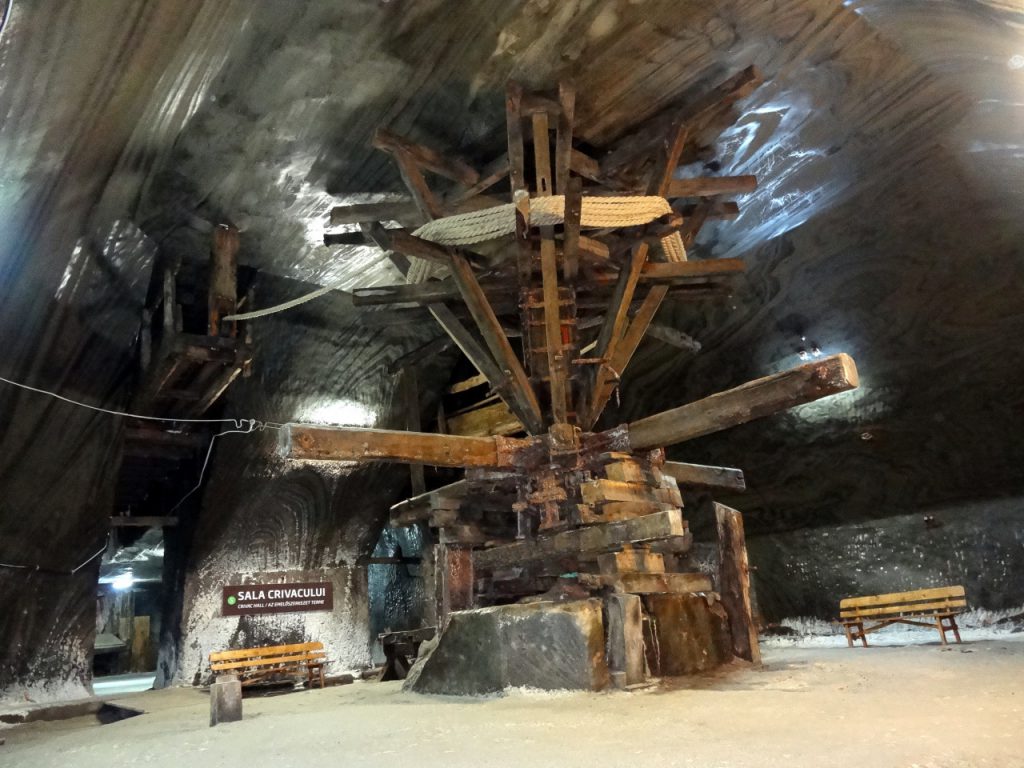
Digging holes in the ground invariably leaves, well, holes in the ground, especially when a significant portion of what has come out of the hole is not there anymore.
Such is the dilemma that has faced mining companies for decades. Today, many jurisdictions dictate that companies submit rehabilitation plans as a condition of getting a license to dig it up but that usually wasn’t the case in the past. The result is that the globe is littered with holes of all sizes bearing witness to past mining activities.
There are well over a million abandoned mines around the world (some sources believe there are likely to be several million), in all sorts of environments. Some are in extremely fragile areas where a mining license probably wouldn’t be granted today. Others are in rare ecosystems found nowhere else on the planet and again, probably wouldn’t be permitted today.
With a bit of planning and ingenuity, old mines can be put to some pretty amazing uses. Using gravitational forces to help generate electricity is not a new concept
The US has some 500,000 abandoned mines. There are over 60,000 in Australia whilst it’s estimated Canada has at least 10,000. The UK and China have at least 1,500 and 12,000 old coal mines respectively without taking into account all the other types of mines. The Philippines also has around 800.
Regardless of where these abandoned mines are, they all pose significant issues. They are aesthetic and dangerous blights on the landscape, and potential sinkholes. They prevent that land from being put to other uses. Many contain significant contaminants like heavy metals along with residues of dangerous chemicals used during the mining process, and may continue to leak noxious fumes like sulphur dioxide, carbon monoxide, and methane.
However, with a bit of planning and ingenuity, old mines can be put to some pretty amazing uses. Using gravitational forces to help generate electricity is not a new concept. Hydroelectricity and tidal generators both use it. Falling water (caused by gravity) is used to spin a turbine (like a water wheel).

The spinning turbine turns a central shaft, which rotates a magnet inside copper wire. As the magnet rotates, its magnetic field causes electrons in the copper wire to move around, producing an electrical current AKA electricity. This electricity can be used directly to power something, or stored in batteries.
This simple concept works with pretty much any object that can be moved by gravity, including heavy weights. If it can spin a turbine, it can theoretically generate electricity and this is where old disused mine shafts come in handy. Heavy weights, dropped far enough for long enough, can potentially produce economically viable quantities of electricity, on demand.
That’s what Scottish energy start-up Gravitricity is counting on. They are currently working on ways to suspend weights in re-purposed old mine shafts so that they can be used to produce electricity on demand. The company has been given a grant to pursue their project in South Africa, where power supply often fails to keep up with demand, and there are very, very deep old mine shafts.
The idea is that when additional power is needed, the weights can be activated (ie dropped down the shafts), some of which are up to 3 kilometres deep, to generate the required power. Obviously the deeper the shafts, the more electricity can be generated.
The idea is that when additional power is needed, the weights can be activated, ie dropped down the shafts, some of which are up to 3 kilometres deep, to generate the required power
According to the company, a fully scaled up power project of this nature should be able to generate enough electricity on demand to keep 63,000 homes powered for at least an hour. A full-scale project in this instance would be 24 weights, weighing 12,000 tonnes in total, dropped 800 metres.
Deeper shafts would produce more power, whilst varying the speed at which the weights are dropped controls the amount and duration of electricity generated. The ‘on demand’ and rapid response nature of this type of power generation makes it very handy in situations where power usage fluctuates, often intermittently.
As for the cost – well it’s claimed that it could be as little as half the cost of a lithium-ion battery. The weights can be dropped over and over and over, multiple times a day, for years on end, or for at least as long as there is available gravity… There’s also zero emissions, zero use of fossil fuels, and 100% reuse of an old mine.
It would seem to be an ideal use for some of the UK’s old abandoned coal mine shafts – from one end of the polluting spectrum to the other.
In New York, a mushroom magnate called Herman Knaust was looking for somewhere to grow his mushrooms and came across an old iron ore mine. He bought it and turned it into a mushroom farm. This was back in 1936, proving that even back then inventive minds could find interesting ways to reuse old mines. By the mid 1900’s the bottom had fallen out of the mushroom market so Herman looked around for other ways to use his mine.
The Cold War, and all the fears and mistrust it generated, gave Herman a light bulb moment. He turned his underground mushroom farm into secure underground storage vaults, called it Iron Mountain, and began offering the space to corporations who wanted to protect their information from natural disasters and nuclear attacks. As demand for high-security storage space ‘mushroomed’ Herman expanded his facility into an old limestone mine that was closer to the city.
Iron Mountain remained an underground storage solution until 1978, when the company established its first above ground facility, also in New York. Today Iron Mountain has locations all around the globe. Although some of them are still underground, most are above ground.
Nevertheless, Iron Mountain remains as testament to some of the unique uses to which old mines can be put. Indeed, its best know storage facility, used by the likes of Bill Gates, Universal Music Group, and the US Office of Personnel Management, is an old limestone mine at Boyers in Pennyslvania.
Iron Mountain bought the site in 1998 but it had been used as a storage facility since 1954. The bulk of the energy efficient storage centre is some 200 feet below the surface, where the limestone walls absorb heat and keep the place at a consistently cool temperature.
The company also has a digital or cloud storage facility, called Room 48, at Boyers with huge banks of servers. Normally all this heat-generating equipment in one place requires extensive and expensive air conditioning to keep it cool but Iron Mountain is able to use a huge lake of cold water at the base of the old mine. The water is circulated through the air conditioning system and then returned to the lake to cool down.
Elsewhere around the globe, researchers and scientists are looking at ways to turn old underground mines into food gold mines as arable surface land becomes increasingly scarce, and precious. In some countries, where wintery conditions can hang around for 6 months of the year, growing fresh produce in purpose-built geothermal buildings is nothing new. Nor is hydroponics, the art of growing fresh produce indoors in nutrient-rich water.
The miles and miles of disused mining tunnels that currently exist around the world could, scientists believe, be equipped with hydroponic planters, coloured LED lights (for photosynthesis) and used to produce an abundance of fresh food for the world’s expanding population. Underground agricultural systems would also have a significant advantage over the vertical or so-called skyscraper farms now appearing in some cities.
First, vertical farms are expensive in terms of infrastructure and installation. They also use water and energy, and they’re vulnerable to weather, conflict and even terrorism. Underground farms on the other hand are relatively protected from all these factors.
The Sanford Underground Research Facility is built in an old gold mine in Lead, South Dakota
A similar use has been found for the old White Pine copper mine in Michigan, USA. Biotechnology company Prairie Plant Systems bought the old mine to turn into a nursery for growing its specialised pharmaceutical medical plants. The plants are grown deep underground where controlled temperatures and isolation from bugs, diseases, fungi, and other contaminants provides an ideal environment for the valuable plants.
The Sanford Underground Research Facility is built in an old gold mine in Lead, South Dakota.
This huge underground physics lab is home to studies about things like subatomic particles and dark matter as well as an assortment of biology, engineering, and geology experiments. It will also be home for CASPAR (Compact Accelerator System for Performing Astrophysical Research), an astrophysical research centre that will study deep space. The lab is around 1.6 kilometres underground, which protects it from the sun and its interfering cosmic rays.
Elsewhere around the world, we’ve seen old open cut mines being turned into beautiful lakes and recreation areas. An old quarry in Shanghai in China is now the location of the InterContinental Shanghai Wonderland hotel. The 5 star ‘groundscraper’ hotel descends vertically 16 stories from ground level into the depths of the quarry. The top 2 levels are above ground; the hotel has 18 stories all up.

When building was completed, the bottom of the quarry was flooded to create an artificial lake and submerge the bottom 2 floors of the hotel. Hotel guests can dine in the underwater restaurant whilst schools of fish float around outside. It also has an underwater swimming pool, and the hotel rooms have windows that look out into the watery surrounds. The lake itself has a waterfall cascading down the quarry wall opposite the hotel, and there are a range of water sports available for guests.
The Comfort Inn in Coober Pedy in remote outback South Australia is also an old mine. Coober Pedy is famous for its opals and the ‘mine that is now a hotel’ was mined for opals for around 50 years during the 1900’s.
Across the US, it’s becoming ‘the thing’ to turn old mines into world class golf courses
Across the US, it’s becoming ‘the thing’ to turn old mines into world class golf courses. There’s one in Michigan that used to be a gypsum mine, and another in Montana that was once a copper mine. However, the golf course resort to end all golf courses, or at least those that used to be mines, is Streamsong in Polk County in the middle of Florida.
This was once a phosphate mine and when it closed down, the company’s golf loving CEO came up with a plan that would not only help keep many of the locals employed, but also do something with the old mine.
According to golfing fans, one of the big advantages Streamsong has over other similar golf courses is that it’s built on the sand produced as a by-product of phosphate mining. Sand produces a lightening fast playing surface. Another standout feature of the complex are all the lovely lakes dotted around the course.
Tin mines often left pits and craters in the landscape, which then filled with water. Enterprising entrepreneurs have turned them into functional facilities and sometimes even built resorts around them
These were once phosphate pits. Some have been fitted out with large-mouth bass as well. Then there’s the first tee, built on top of a 100 metre high sand dune. One of the 4 restaurants is even called P2O5. The place is unashamedly, unreservedly and very obviously an old mine site, and proud of it.
Tin mines often left pits and craters in the landscape, which then filled with water. Enterprising entrepreneurs have turned them into functional facilities and sometimes even built resorts around them. Hon Fatt Mines in Selangor, Malaysia was once one of the biggest tin mines in the world. Today it’s the Mines Resort City. The complex includes a 5 star hotel, a custom built beach, and a huge golf course.
Old salt mines in Europe have been turned into cathedrals, as has one in South America. A company in Romania has built an underground theme park in a salt mine there. A 17th century salt mine in Transylvania has been transformed into an amusement park called Salina Turda.
The mine still has some old mining equipment sitting there, and can be seen via organised tours. If you’re interested in subterranotherapy, you can head to an underground spa built in an 800 year old Polish salt mine whilst in Japan, an underground running track in an old iron ore mine is a great high altitude training venue due to its low oxygen levels.
An old limestone mine in Pennsylvania now does duty as an underground ATV park. Another in Kentucky has been turned into an underground bike park. A sunken botanical garden built in an old limestone quarry on Vancouver Island early last century is now a listed National Historic Site in Canada. Gotland Ring is a car racetrack on Gotland Island in Sweden in what was once a limestone quarry.
Two 200-year-old slate mines in Wales in the UK, owned by Zip World, are now adventure-tourism destinations with ziplining courses, trampolines and a network of netting walkways, tunnels and slides. The Eden Project is a series of biomes housing botanical gardens, built in what used to be a clay pit in Cornwall in the UK. An old silver mine in Northern Ontario was transformed into a firefighter’s museum and grocery store.
A granite quarry in Portugal is now a 30,000 seat soccer stadium and home to a sporting club called Clube de Braga, which also has its own soccer team. And speaking of stadiums, Dalhalla is an amphitheatre built in an old limestone quarry in Dalarna, Sweden.
We could go on, and on, about all the wonderfully inventive ways to reuse old mine sites, including turning ones in the middle of nowhere into solar farms. However, not all old mines are suitable to be reused. Many are dangerous, unstable, toxic and leak acidic water (acid mine drainage).
(This article first appeared in Mining International Inc.)
Comments
Michael Short
Fantastic article, the evidence and research behind gravity batteries is definitely a growing space. Interestingly a similar concept is being researched at Economical Energy with there patented VIPER (Vertically Integrated Potential Energy Revisor) technology.